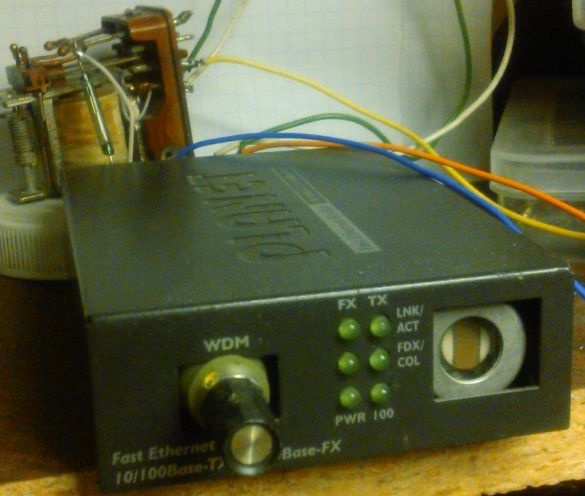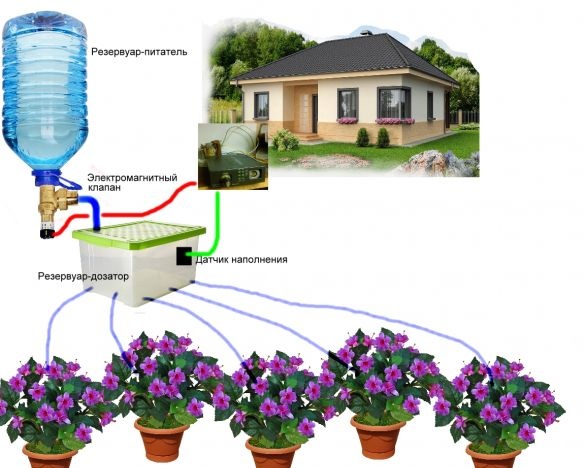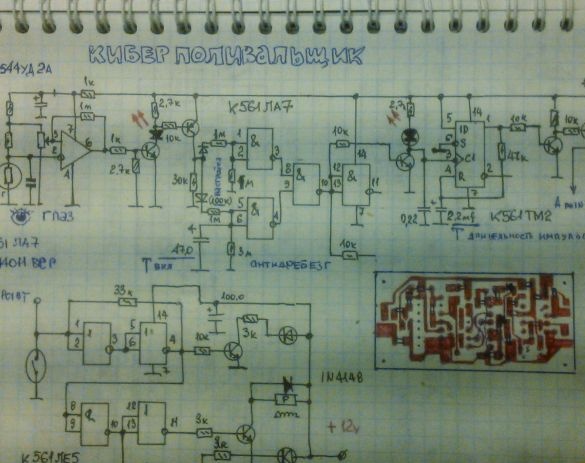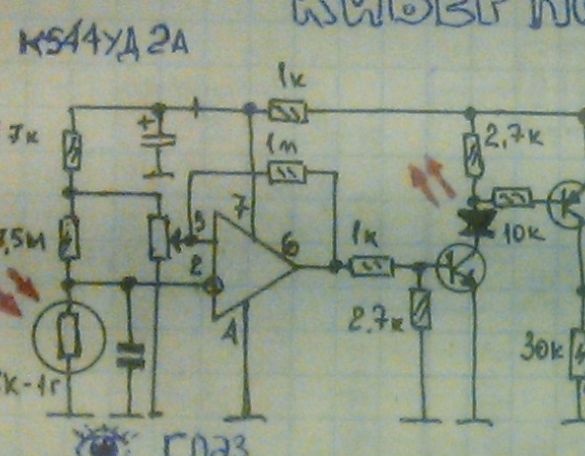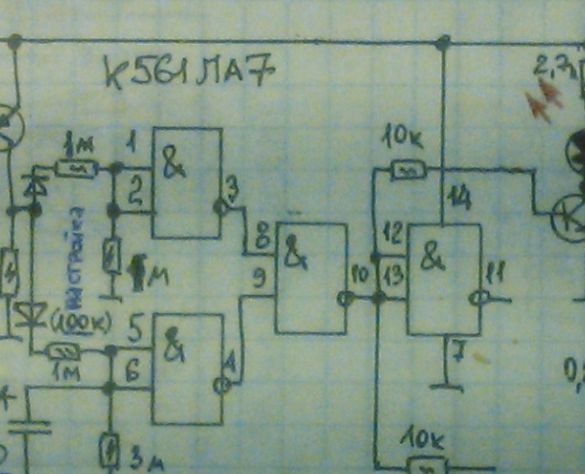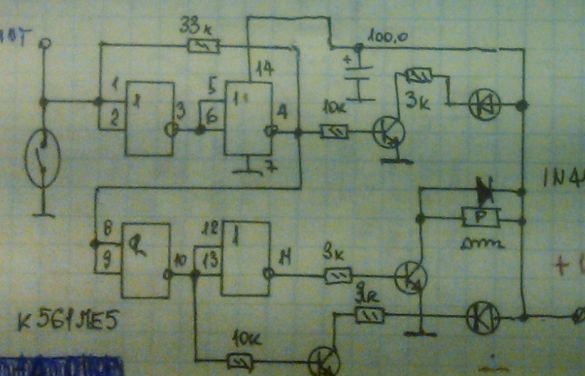Gardeners say it’s more efficient to water the plants in the evening. So in my design, irrigation is done at dusk.
The essence of the unit in the picture.
After dark electronics the waterer feeds the relay, which, in turn, controls either the solenoid valve or the water pump. The valve is used if a storage tank is used, which contains a certain amount of water (for example, a stock for a week or two). Accordingly, the capacity for these purposes can be of any size. From the storage tank, water through a valve or from a pump enters the metering tank. The name speaks for itself. The essence of watering plants, not pour. Since the capillaries from the dispenser to the plant are thinner than the feeder hose, the level in the dispenser after a while rises to the point where the filling sensor is installed in the form of a reed switch placed in a plastic tube sealed on one side and mounted vertically. A float with a small ring magnet, freely moving up and down the tube interacting with the reed switch, will create a contact and the command to turn off the valve or pump will go to the waterer (the filling sensor can be of another design). Relay de-energized. The power circuit of the actuators will “crumble” until the next evening.
Schematic diagram in the figure
Consists of modules:
- Photo Sensor
- anti-bounce. (prevention of false alarms of the device during force majeure exposure of the photo sensor, that is, lightning flashes, headlights of passing cars in the dark. They can interrupt the day-night cycle) Yes, by the way, if you connect a 10k resistor to the base of the transistor to the conclusion of the chip "11", the irrigation process will not start in the evening, but at dawn.You can improve the circuit by adding another path - anti-bounce + pulse timer + control, removing the command from the "11" output for the second path. It turns out that part of the plants will be irrigated in the evening, part in the morning.
- pulse timer (switching on the pump or valve control circuit is carried out with a short pulse up to 0.5 sec to point A)
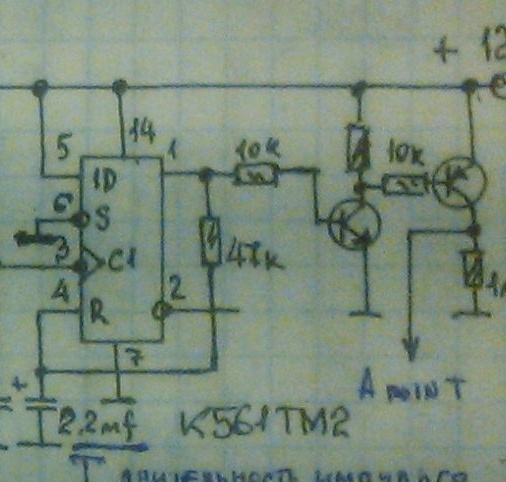
- control of executive devices
The circuit is powered from a 12-20 volt DC power supply through the LM7809 integrated stabilizer (stabilizer inside the case). And the relay is powered to the stabilizer for reliable operation. The design, in addition to the relay, fit in a metal housing from WDM. On the front panel of the case there is a photoresistor, a potentiometer for adjusting the sensitivity of the photo sensor, and LEDs for controlling the filling of the dispenser. The relay is taken out, because it is located next to the actuator and can switch a powerful current load corresponding to the contacts of the selected relay type. Although it can be just intermediate (I hope you understand what I mean) and manage a whole network of executing devices.
Well, and as always, developing and assembling the electronics turned out to be much easier than setting up the "mechanics of water pipes." Haha
Thank you so much to those people who at one time posted on the Internet a very competent development !!!!! I wish you success!!!

